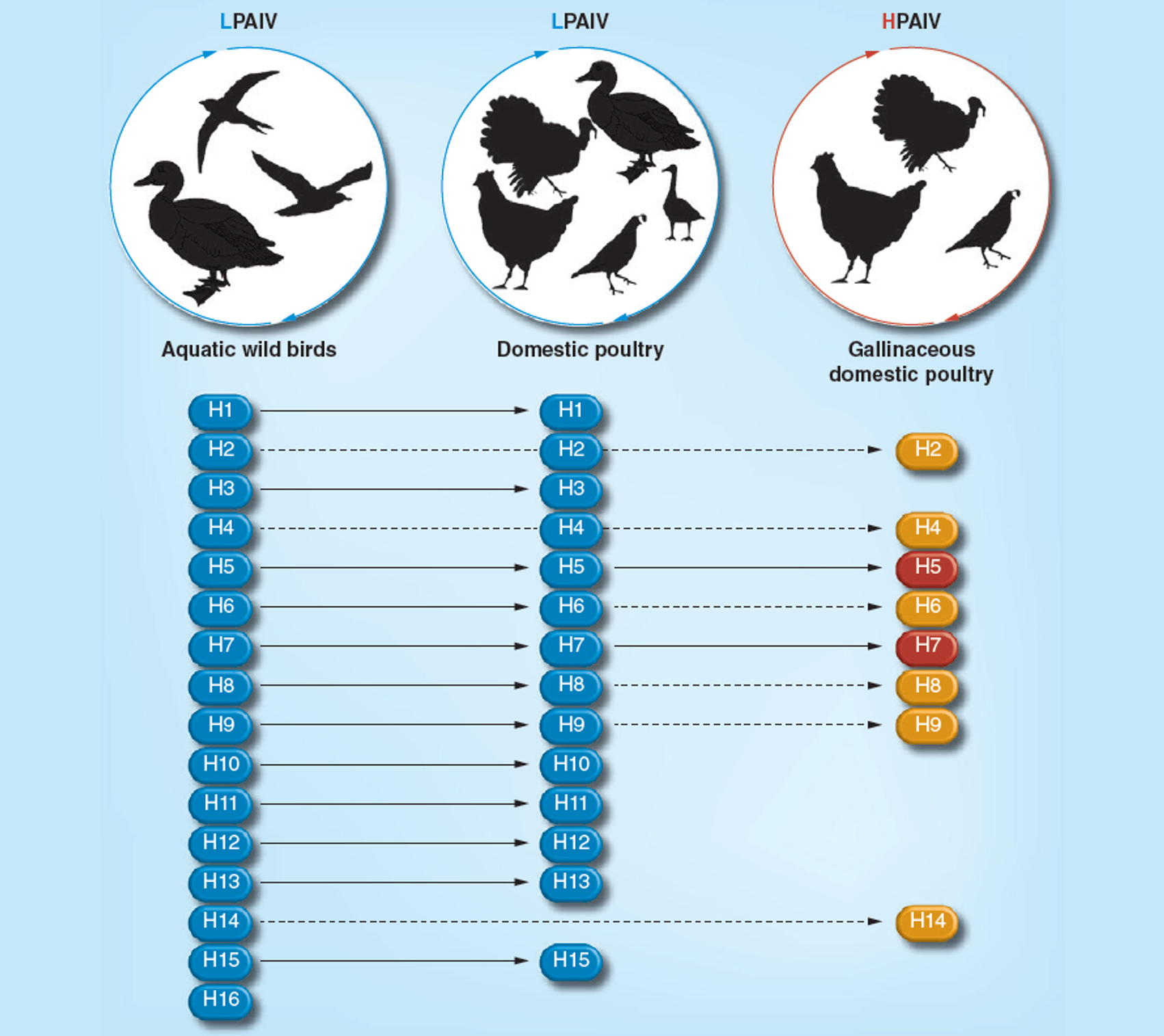We know HPAI vaccines antigenically matched with field strains can prevent disease and significantly reduce viral shedding.7
You are viewing EMENA
- United States
- Canada
- Mexico
- South America
- EMENA
- Sub-Saharan Africa
- Russia
- South Asia
- Asia Pacific
- China
A global presence, with local expertise. Visit our regional sites:
- United States
- Canada
- Mexico
Popular Searches
- Animal Vaccines
- Educational Resources
- Featured Vaccines
Featured Vaccine — Kemin Biologics EMENA

Sizing the impact
The Avian Influenza (AI) virus belongs to the Orthomyxoviridae family and is grouped into subtypes on the basis of surface glycoproteins [hemagglutinin (HA /18) and neuraminidase (NA/11)]. In birds, up to 16 HA and 9 NA subtypes have been identified.8 These glycoproteins are the main antigenic components of the virus and act as immune modulators.1,2
In recent years, the mutating nature of highly pathogenic avian influenza (HPAI) viruses has caused multiple outbreaks in poultry and wild birds worldwide, with virus clade 2.3.4.4b being reported across Europe, Asia, Africa and North America. Beyond the devastating impact for the poultry industry, evidence suggests that HPAI strains also represent a threat for public health, with at least six human cases of clade 2.3.4.4b viruses reported from China, Spain, United Kingdom, United States, Vietnam, and more recently, South America.3
As illustrated in the image, HPAIV H5 and H7 strains represented in red are commonly found in aquatic wild birds (left panel) and domestic poultry (middle and right panels).4

Managing the risk
Using a holistic approach, vaccination has demonstrated to be critical in significantly reducing viral shedding and preventing the spread of the disease.5
According to EFSA, a shorter antigenic distance indicates a higher antigenic match, which correlates with a strong protective immune response.1 MEFLUVAC™ H5N8 demonstrates the shortest antigenic distance to current circulating field strains because the surface glycoprotein H5 from clade 2.3.4.4b was included in the vaccine composition.9

Building immunity
Strategic Location
Our competence center is strategically located in Egypt where migratory routes of wild bird converge. These capabilities are critical for monitoring and isolating recent and relevant strains for transboundary poultry diseases, such as Avian Influenza.

Efficacy against HPAI challenge with subtypes H5N8 and H5N6
Field results comparing two vaccination regimes concisely show i) the survival rate of vaccinated birds against virulent influenza viruses, and ii) the ability of reducing viral excretion; both considered important criteria when evaluating the efficacy of AI vaccines. The viral load was evaluated through the analysis of oro-pharyngeal swabs after challenge.6

Challenge by HPAI H5N8 clade 2.3.4.4b at day 21 post-vaccination

- 90% survival in vaccinated groups versus 0% in control group.
- Reduced shedding and viral load evidenced in both vaccinated groups.
Challenge by HPAI H5N6 clade 2.3.4.4g at day 21 post-vaccination

- 100% survival in 2x vaccinated versus 0% in the control.
- Over the ten-day sampling period there was a clear reduction in viral shedding in both vaccinated groups.
References:
1. Squarcione, S.; Sgricia, S.; Biasio, L.R.; Perinetti, E. Comparison of the reactogenicity and immunogenicity of a split and a subunit-adjuvanted influenza vaccine in elderly subjects. Vaccine 2003.
2. Guan Y, et.al . (2000) H9N2 influenza viruses possessing H5N1-like internal genomes continue to circulate in poultry in southeastern China.
3. Bruno et al 2023. First case of human infection with highly pathogenic H5 avian Influenza A virus in South America: A new zoonotic pandemic threat for 2023?. Journal of Travel Medicine, 2023, 1–3 https://doi.org/10.1093/jtm/taad032
4. https://www.futuremedicine.com/doi/pdf/10.2217/fvl.13.27
5. Kilany, W. et. al. (2016). Protective efficacy of recombinant turkey herpes virus (rHVT-H5) and inactivated H5N1 vaccines in commercial mulard ducks against the highly pathogenic avian influenza (HPAI) clade 2.2.1 virus.
6. TL-22-20110.
7. Brown, Ian (2022). Vaccination against HPAI. Animal Plant & Health Agency. 30th WOAH Conference of the Regional Commission for Europe, Catania, Sicily, Italy.
8. Influenza Type A Viruses, centers for disease control and prevention.
9. EFSA Journal, 21(10), 1–87. https://doi.org/10.2903/j.efsa.2023.8271. First published: 10 October 2023.
Learn How MEFLUVAC™ H5 PLUS 8 Integrates into Your Poultry Operation
The content on this site is intended for informational purposes only and is not intended to be a substitute for professional veterinary advice. Although the information on this site is accessible worldwide, not all products or services are available to all persons or in all geographic locations or jurisdictions. Certain statements, product labeling and claims may differ by geography or as required by local governmental regulations.
Products
Careers
Careers
- California Supply Chain Act
- Email Disclaimer
- GDPR Personal Data Addendum
- General Terms & Conditions for Vendors
- Global Environmental Policy Statement
- Indirect Cost Estimates
- Kemin Terms & Conditions
- Modern Slavery Act Transparency Statement
- Privacy Policy
- Sitemap
© Kemin Industries, Inc. and its group of companies all rights reserved. ® ™ Trademarks of Kemin Industries, Inc., USA
Certain statements may not be applicable in all geographical regions. Product labeling and associated claims may differ based upon government requirements.
You are viewing EMENA
- United States
- Canada
- Mexico
- South America
- EMENA
- Sub-Saharan Africa
- Russia
- South Asia
- Asia Pacific
- China
A global presence, with local expertise. Visit our regional sites:
- United States
- Canada
- Mexico
Privacy Policy
By browsing this site you permit us and our partners to place identification cookies on your browser and agree to our use of cookies for marketing. Review our cookies policy for details.

